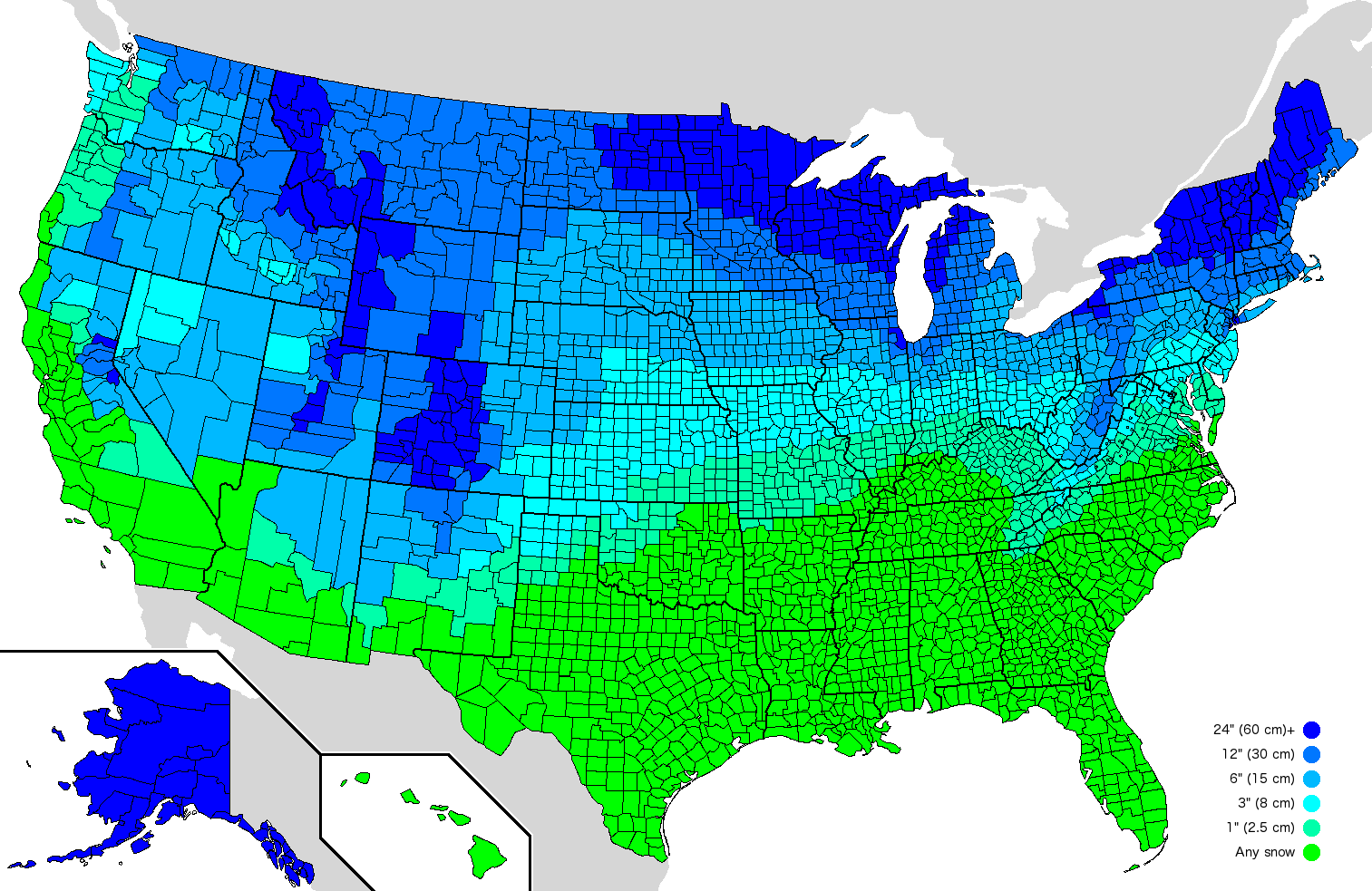Snow Day Calculator: Predict Your School Closing
Watching the winter weather forecast and wondering if you’ll get a day off from school? Trying to figure out if you need to arrange childcare for tomorrow is a yearly ritual for parents and a source of hope for students across the country. Our Snow Day Calculator analyzes the key factors that superintendents consider—from snow totals and timing to the all-important ice factor—to give you a fun and insightful prediction on the chances of a school cancellation or delay.
Enter your US Zip Code or Canadian Postal Code to predict the likelihood of a snow day or delay for tomorrow.
Snow Day Probability for Tomorrow:
Factors Considered:
Probability Contribution:
Snow Day Cancellation Threshold Map
Explore how much snow it typically takes to cancel school in different parts of the U.S. Enter a Zip or Postal Code to find the estimated threshold for that area.

Estimated Snow Day Threshold:
Note: This is an estimation based on general regional patterns from the map. Actual school closure decisions depend on many factors specific to each district.
How to Predict Your Snow Day
Our calculator uses a combination of real weather data and other crucial factors to make its prediction. For the best result, fill in each field as accurately as possible.
1. Your Zip Code
Enter your 5-digit zip code. This allows the calculator to access localized weather forecast data for predicted snowfall totals, timing, and potential for ice in your specific area.
2. Type of School
Select Public or Private. This is an important factor, as large public school districts often have more complex busing schedules and cover a wider geographical area, which can lead them to cancel more cautiously than smaller, local private schools.
3. Timing of Snowfall
When the snow falls is just as important as how much. Select the time when the worst of the storm is predicted to hit.
Overnight (10 PM – 5 AM): Gives road crews some time to work but can still make for a very messy morning.
Morning Rush (5 AM – 9 AM): The most dangerous time for buses and student drivers. Snow during this window dramatically increases the chance of a closure.
All Day: A long, steady snow event that may start small but get progressively worse.
4. Predicted Snowfall (Inches)
Check your local forecast and enter the total number of inches of snow predicted for your area.
5. Ice & Sleet
Is ice, sleet, or freezing rain a major part of the forecast? Check “Yes” or “No.” Even a thin glaze of ice is often a more significant factor for school closures than several inches of fluffy snow.
6. Superintendent’s Tolerance (A Fun Guess!)
How likely is your school’s leader to call a snow day? This subjective factor can make all the difference!
Low Tolerance (Cancels Easily): Prioritizes safety above all else and will cancel at the first sign of slick roads.
Medium Tolerance (Standard): Makes a balanced call based on information from road crews and weather spotters.
High Tolerance (Never Cancels): Will keep schools open unless conditions are truly impassable.
Analyzing Your Snow Day Prediction
The calculator provides a percentage chance of a snow day, along with a fun recommendation. But this prediction isn’t random; it’s based on how school districts actually make the call.
Your Snow Day Probability
This is your bottom-line result. A high percentage means it’s time to find your sleds, while a low percentage means you should probably finish your homework!
How We Calculated Your Score: The Key Factors
The Ice Factor (Most Important): If your forecast includes ice or freezing rain, the calculator adds a huge weight to the snow day probability. Ice is the number one reason for closures because it makes it impossible for heavy school buses to steer or brake safely.
Timing is Everything: Snowfall during the morning commute is the worst-case scenario for school transportation. The calculator heavily favors a cancellation if the storm’s peak is between 5 AM and 9 AM.
Snowfall Amount: More snow equals a higher chance of a day off. However, the impact is not linear. The difference between 2 and 4 inches is significant, but the difference between 10 and 12 inches is less so—at that point, school is likely closed anyway.
Your Superintendent: This fun factor fine-tunes the score. A “Low Tolerance” superintendent gives your prediction a significant boost, while a “High Tolerance” one will lower the probability.
Your Snow Day Questions Answered
Who actually makes the decision to call a snow day?
The final decision is made by the Superintendent of the school district. However, they do not make the decision in a vacuum. Starting as early as 3 AM, they consult with a team that includes the head of transportation (who may be driving the roads), local road crews, law enforcement, and weather forecasting services. They often confer with superintendents in neighboring districts as well.
What time is the decision usually made?
Most school districts try to make the final call by 5:30 AM. This gives them time to alert news stations and, most importantly, to contact bus drivers and staff before they begin their routes and commutes. If a storm is severe and conditions are certain to be bad, a district may make the call the night before.
Why is ice more dangerous than snow?
While heavy snow is difficult to drive in, it’s a problem that can be solved with plows. More importantly, snow provides at least some friction for tires. Ice, especially freezing rain, creates a near-frictionless surface. For a heavy vehicle like a 15-ton school bus, this means steering and braking become dangerously unpredictable, making it the single greatest weather-related risk.
What’s the difference between a 2-hour delay and a cancellation?
A 2-Hour Delay is called when conditions are currently unsafe but are expected to improve. It gives road crews two extra hours of daylight to clear and salt the roads, and it allows the morning rush to thin out.
A Cancellation is called when conditions are severe and are not expected to improve enough to ensure a safe commute for students and staff at any point in the morning.
What are “e-learning” or “virtual” snow days?
A growing trend since 2020, “e-learning days” (or AMI days) replace a traditional snow day with a day of remote instruction from home. Instead of a day off, students are required to log in and complete assignments. Whether a district uses these depends on state laws, union agreements, and the district’s technological capabilities.
What’s the difference between sleet, freezing rain, and hail?
These terms are often used interchangeably, but they are different meteorological phenomena.
Sleet: Raindrops that freeze into tiny ice pellets before they hit the ground. They bounce on impact.
Freezing Rain: Rain that falls as a liquid but freezes on contact with a surface that is at or below 32°F (0°C). This creates a glaze of ice and is the most dangerous winter precipitation type for travel.
Hail: Frozen pellets of ice formed in the violent updrafts of thunderstorms. Hail is mostly a warm-weather phenomenon and is not associated with winter snowstorms.
How cold does it have to be for a “cold day” cancellation?
Schools may also cancel for extreme cold even without snow. This decision is based on the wind chill temperature, which is how cold the air feels on exposed skin. There’s no national standard, but many districts in the Midwest and Northeast will consider closing if the wind chill is forecast to be sustained at -25°F or colder. This is to protect children from the risk of frostbite while waiting at the bus stop.
Is this calculator 100% accurate?
No. This is a fun and educational tool designed for entertainment and insight. The final decision to delay or close school rests entirely with your local school superintendent. Always check official school announcements, the district website, or local news for the definitive word.
What are some classic snow day superstitions?
For decades, students have relied on superstitions to try and will a snow day into existence. Some of the most popular include:
Wearing your pajamas inside out and backward.
Placing a spoon under your pillow.
Flushing ice cubes down the toilet (one for each inch of snow you want).
Putting a white crayon in the freezer.
Plan Your Potential Day Off
Now that you’ve predicted your chances, plan for the possibilities!
Wondering what the temperature will be in Celsius? Use our Temperature Conversion Calculator.
If you do get a day off, see how many days are left until your next school break with our Days Until a Date Calculator.
Planning a fun day of sledding or skiing? See how many calories you might burn with our Winter Sports Calorie Calculator.
Creator

